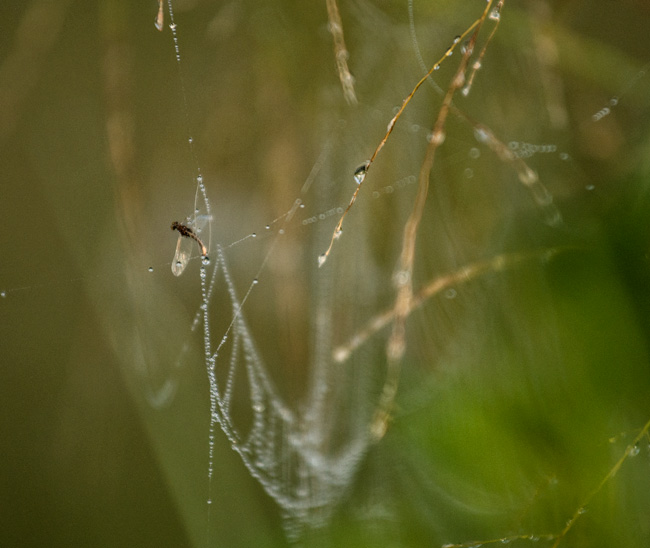Small Ball: Tactics for Tricos
Last year while on a trico road trip I ran across legendary Wisconsin angler Ron Manz as he was surveying a bridge pool in the Driftless. It was early morning. Rags of fog hung above the river and the first birds hadn’t yet appeared. Ron invited me to fish a remote downstream pool with him and I accepted. As we waited for the bugs to drop, an interval that turned out to be about two hours that day, Ron talked at length about his decades of experience with the trico hatch, annotating his speech from time to time with an item from his fly box. The tips I took from Ron that day have improved not only my trico fishing, but my small-ball surface game in general. They’ll do the same for you.
Ditch the Small Hook
Did you know you can tie a size 22 fly on a size 18 hook? Just don’t use the whole shank to tie it. While you may occasionally encounter ultra-, ultra-selective fish that require a more conventional approach to presentation sizing, more often than not you can play at the margins of hook and fly size (especially if you heed tip #2). You’ll triple your hookups and double your ability to stay stuck to fish.
Put Your Fly in Reverse
One of the distinguishing features of the trico spinner is the splayed tail three times the length of the body. And one of the distinguishing features of tying those spinners is the suffering involved in getting those tails just right. You can make your tying easier and your creations equally if not more realistic by tying your trick spinners in reverse—and putting your tail on at the stream. No, I’m not talking about supergluing microfibbets, I’m talking about leaving a long tag end of your preferred knot and then cutting it three times the body length of your imitations. Sure, it’s a bit asymmetrical, but trust me: the trout don’t seem to mind.
7x Can Take a Hike
Tying on larger hooks will allow you to fish slightly larger tippet. Sure, it’s possible that micro-drag might garner you a few refusals, but you will also lose fewer fish to break-offs and snags. What’s worse: missing fish that never ate, or losing the fish you stuck? I suppose there’s an argument to be made for each, but I get stung more by the latter. I’m one of those guys who used to carry 8, 9 and 10x. Now the smallest I go is 6.
Wait For It
The best trico fishing is in slick, somewhat greasy areas where a riffle tilts into a pool, so you’re usually dealing with fish in relatively flat, unbroken water. Fish can get spooked on this water if you hit it before the bugs start to fall en masse. Since you’ll probably spend most of the spinner fall on the pool in front of you, try being ultra-patient and waiting until the fish really start rising throughout the pool before starting to fish. Trico fish can get into a frenzy, and they seem to build off each other’s eating. Once every animal in the pool is chowing down, they won’t notice the commotion going on behind them as target the fish closest to you and pick your way through the pool.
When in Doubt
If you encounter fish that just don’t want anything to do with your offering, throw a cinnamon ant, size 18. Ants can convert tricky trico (and baetis) fish in a way nothing else can. One of these years I’m going to just throw ants for a full month in the summer and see what comes of it.
When It’s Over
Just because the fish bugs have dropped and the fish have fallen doesn’t mean it’s over. Now’s time to put on a small but visible fly (a size 18 high-vis Adams) with a wire body trico dropper. A trico body doesn’t really offer great opportunities for adding weight—no room for lead wraps or a bead-head—but by tying your sunken tricos on heavier gauge nymph hooks and hitting your tippet and bug up with some sink accelerant like Loon’s Henry’s Sinket, you should be able to get down two or so feet for the meat of a good drag free drift.
In Sum
The last great thing about tricos? They get you up early to make the most of the summer day, and after the fishing’s over you’ve still got a long summer day ahead of you. If you hit the hatch right and fished it well, you should be pretty well fished out by the time noon rolls around, at which point you can be a glutton and throw terrestrials or talk the day off, hike or bike and hit the river again with attractors in the evening. It’s a great, technical, fishful hatch, and it’s not going to load the launch with driftboats.












